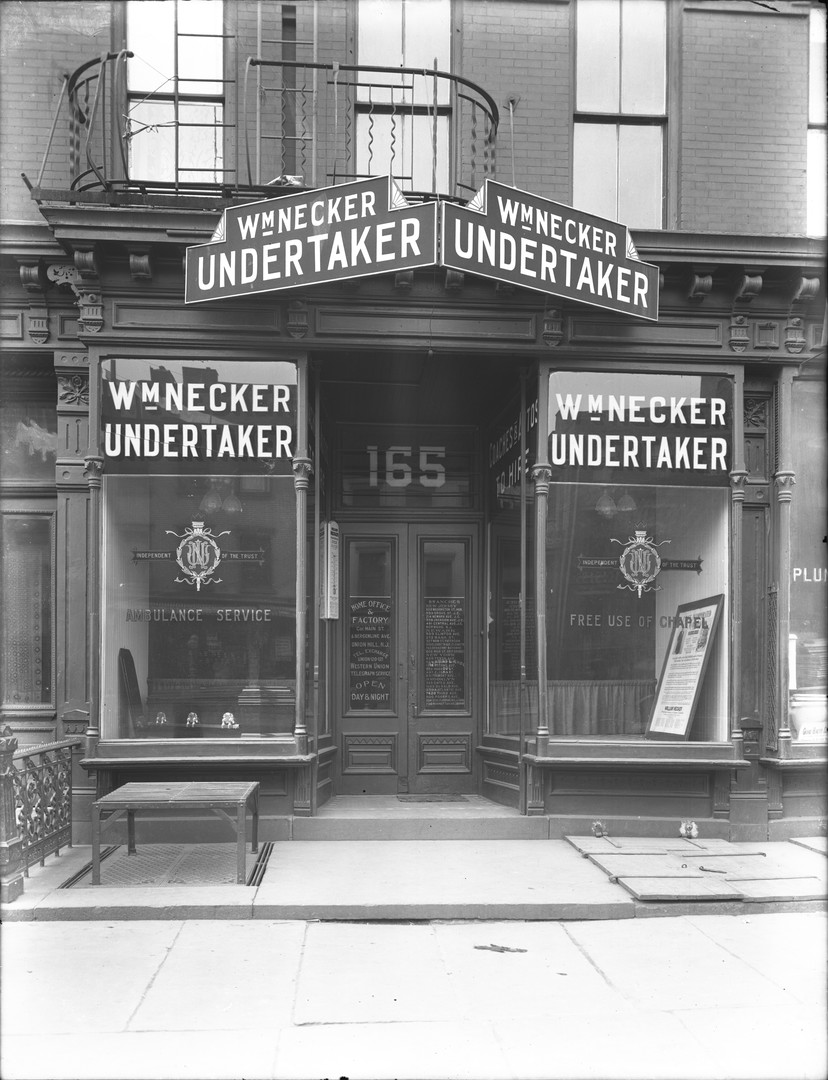
Whereas once when a person died, the family prepared the body at home, mourners visited at home, and one's community provided the labor for burial, new technology developed during and as a result of the Civil War—embalming— allowed funeral business to thrive. In the decades after the Civil War in New York City, carpenters became coffin makers and then undertakers, religious societies took on funerary responsibilities and liverymen who once only moved the deceased to outer borough rural cemeteries took on more mortuary duties. By the early 20th century, storefront undertakers served neighborhoods all over the city, catering to different ethnic enclaves and social-economic groups. They provided all-encompassing services: acting as notaries, securing wake, funeral and burial venues, and furnishing transportation. In 1917 commercial photographer William Hassler was hired by Sunnyside Magazine, a long-running undertaker trade journal to document some of New York's grimmest businesses. (It should be noted that The Sunnyside was not the only such publication, though it was the most pleasantly named; others included The Casket and The Weekly Shroud.) The resulting illustrated article was entitled "Grewsome Undertaker Establishments."